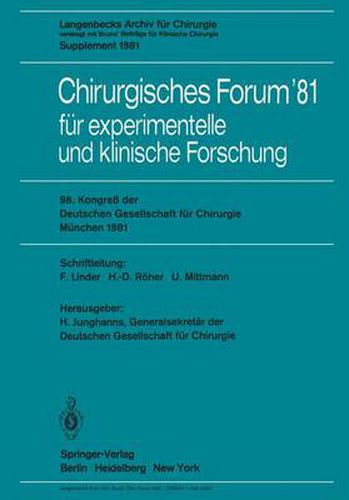Readings Newsletter
Become a Readings Member to make your shopping experience even easier.
Sign in or sign up for free!
You’re not far away from qualifying for FREE standard shipping within Australia
You’ve qualified for FREE standard shipping within Australia
The cart is loading…






This title is printed to order. This book may have been self-published. If so, we cannot guarantee the quality of the content. In the main most books will have gone through the editing process however some may not. We therefore suggest that you be aware of this before ordering this book. If in doubt check either the author or publisher’s details as we are unable to accept any returns unless they are faulty. Please contact us if you have any questions.
After intraperitoneal administration of 14C-labeled PVP iodine with lower and higher molecular weights (viscosity constants K 17 and K 28) in 124 female Wi star rats, both substances were resorbed completely from the peritoneal cavity. The distribution and the retention of PVP with higher molecular weights in all organs is identicaL to the already known phenomena which occur after intravenous administration of PVP. Compared with the half- life of PVP K 17, that of PVP K 28 is clearly prolonged in all organs. Furthermore, the renal elimination of the high-molecular weight PVP K 28 is significantly slower. Literatur 1. AMMON R, DEPNER E (1957): Z ges exp Med 128: 607-628 2. HESPE W, MEIER AM, BLANKWATER YJ (1977): Arzneim-Forsch Drug Res 27 (I), 6, 11 58 -11 62 3. SCHILLER REB, G, TAUGNER R (1978): Arzneim-Forsch Drug Res 28 (II), 11, 2064-2070 Dr. G. Gortz, Chirurgische Klinik und Poliklinik im Klinikum Steglitz der Freien Universitat Berlin, Hindenburgdamm 30, D- 1000 Berlin 45 2. Untersuchungen zur pathophysiologischen Bedeutung von transfundierten Thrombocytenaggregaten Pathophysiologic Significance of Tranifused Platelet Aggregates K L. LauteIjung, J. Seifert und W. Brendel Institut fUr Chirurgische Forschung am Klinikum GroBhadern (Dir.: Prof. Dr. Dr. h. c. W. Brendel) und Chirurgische Klinik, Klinikum GroBhadern (Dir.: Prof. Dr. G. Heberer) Wahrend der Lagerung von ACD-Blut bilden sich Mikroaggregate, die vorwiegend aus Thrombocyten bestehen.
$9.00 standard shipping within Australia
FREE standard shipping within Australia for orders over $100.00
Express & International shipping calculated at checkout
This title is printed to order. This book may have been self-published. If so, we cannot guarantee the quality of the content. In the main most books will have gone through the editing process however some may not. We therefore suggest that you be aware of this before ordering this book. If in doubt check either the author or publisher’s details as we are unable to accept any returns unless they are faulty. Please contact us if you have any questions.
After intraperitoneal administration of 14C-labeled PVP iodine with lower and higher molecular weights (viscosity constants K 17 and K 28) in 124 female Wi star rats, both substances were resorbed completely from the peritoneal cavity. The distribution and the retention of PVP with higher molecular weights in all organs is identicaL to the already known phenomena which occur after intravenous administration of PVP. Compared with the half- life of PVP K 17, that of PVP K 28 is clearly prolonged in all organs. Furthermore, the renal elimination of the high-molecular weight PVP K 28 is significantly slower. Literatur 1. AMMON R, DEPNER E (1957): Z ges exp Med 128: 607-628 2. HESPE W, MEIER AM, BLANKWATER YJ (1977): Arzneim-Forsch Drug Res 27 (I), 6, 11 58 -11 62 3. SCHILLER REB, G, TAUGNER R (1978): Arzneim-Forsch Drug Res 28 (II), 11, 2064-2070 Dr. G. Gortz, Chirurgische Klinik und Poliklinik im Klinikum Steglitz der Freien Universitat Berlin, Hindenburgdamm 30, D- 1000 Berlin 45 2. Untersuchungen zur pathophysiologischen Bedeutung von transfundierten Thrombocytenaggregaten Pathophysiologic Significance of Tranifused Platelet Aggregates K L. LauteIjung, J. Seifert und W. Brendel Institut fUr Chirurgische Forschung am Klinikum GroBhadern (Dir.: Prof. Dr. Dr. h. c. W. Brendel) und Chirurgische Klinik, Klinikum GroBhadern (Dir.: Prof. Dr. G. Heberer) Wahrend der Lagerung von ACD-Blut bilden sich Mikroaggregate, die vorwiegend aus Thrombocyten bestehen.